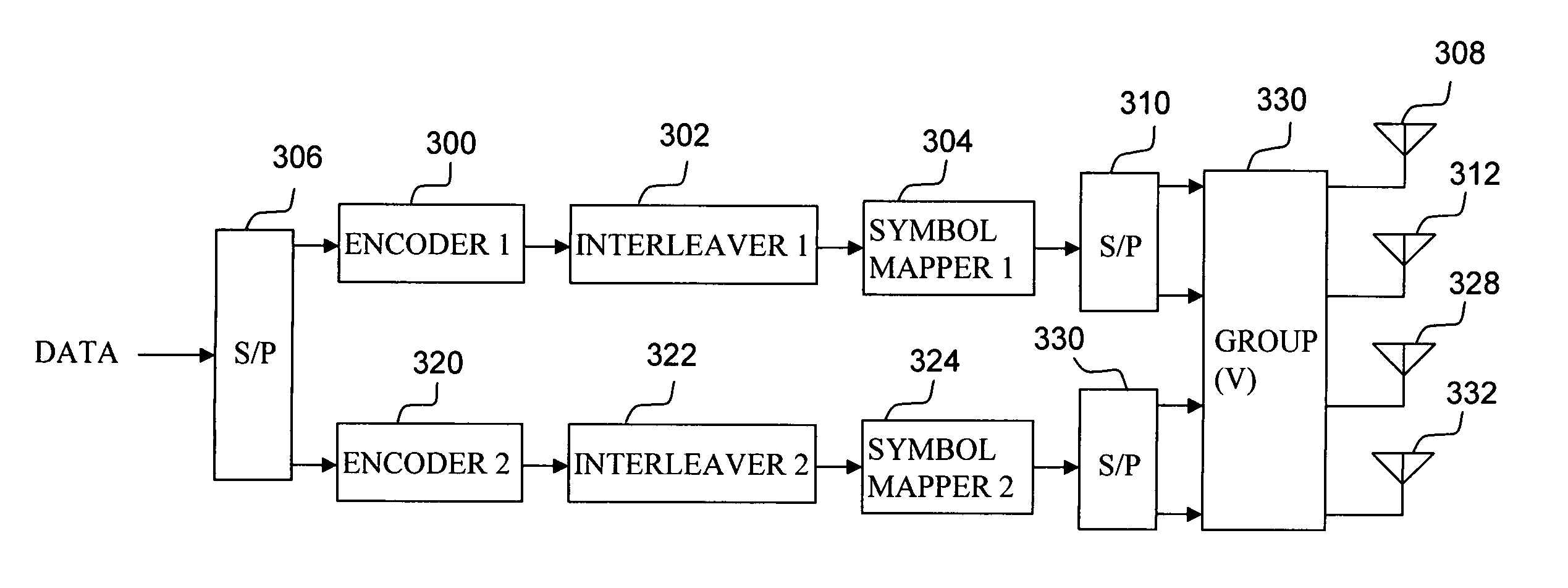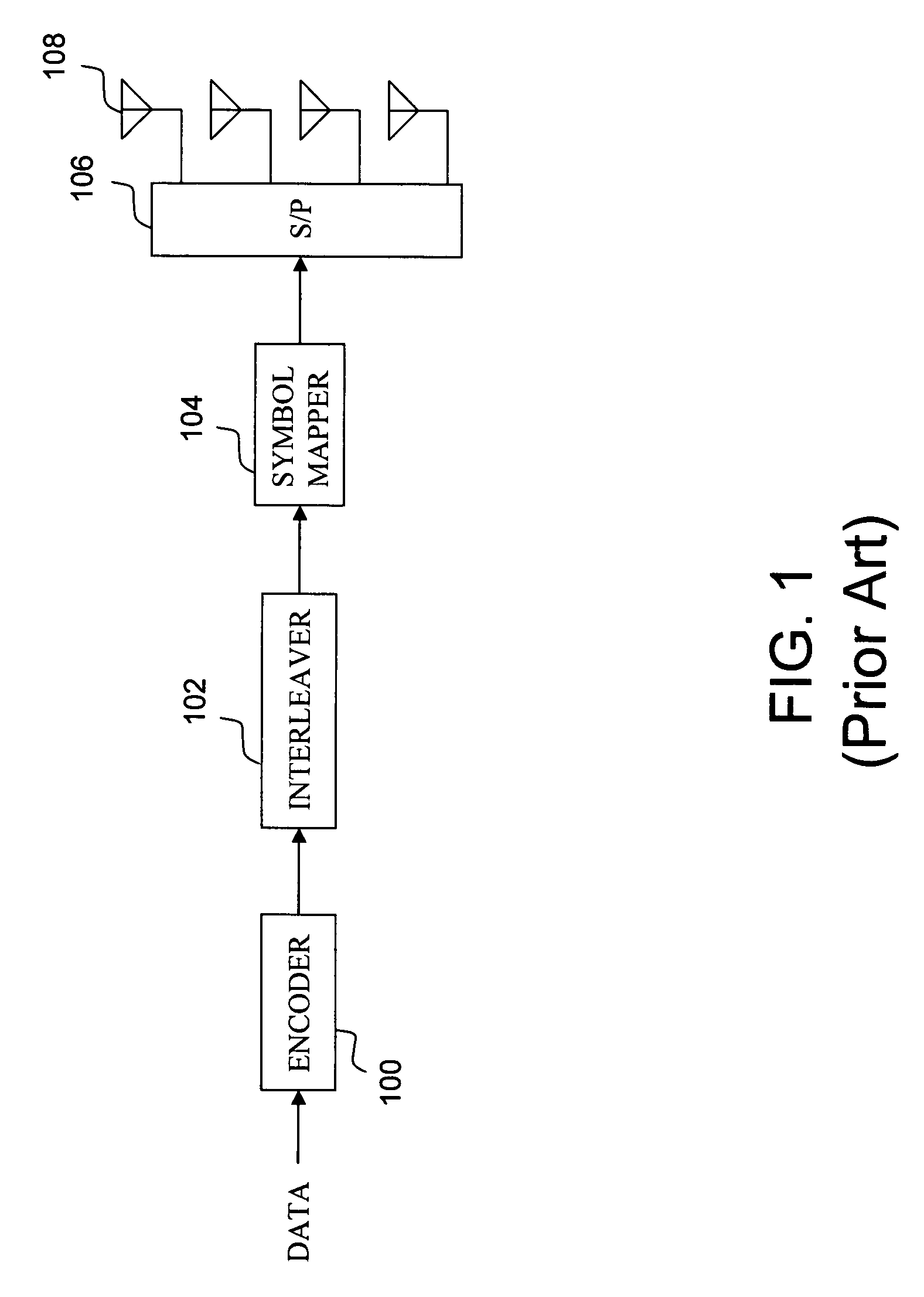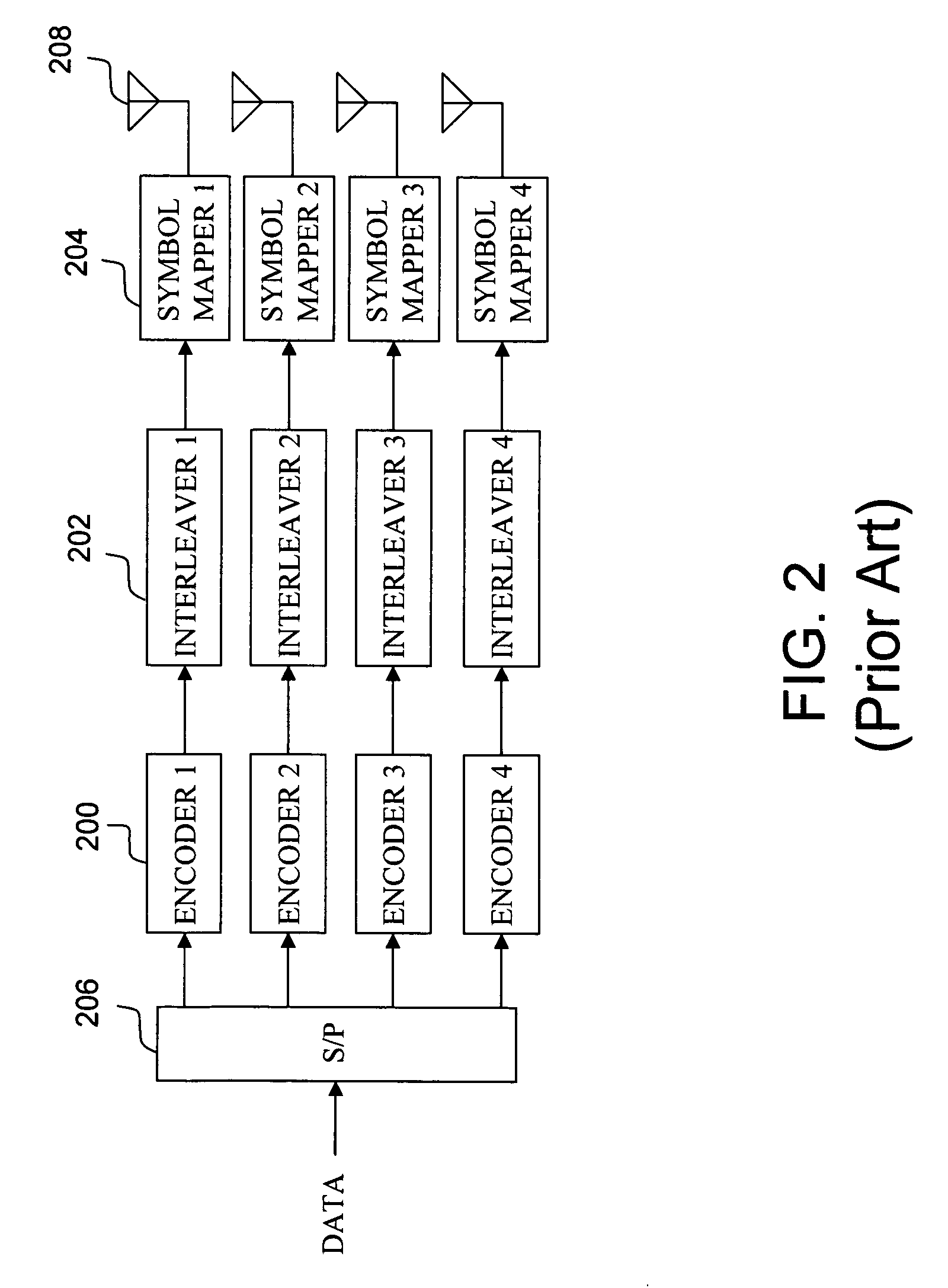MIMO PGRC system and method
- Summary
- Abstract
- Description
- Claims
- Application Information
AI Technical Summary
Benefits of technology
Problems solved by technology
Method used
Image
Examples
Embodiment Construction
[0025] The preferred embodiments of the present invention provide circuit simplification for a wireless communication system. The wireless communication system preferably provides for the Long Term Evolution of High-Speed Downlink Packet Access (HSDPA) and Multiple-input Multiple-output (MIMO) as will be explained in detail. A simplified block diagram of a wireless transmitter of the present invention for such a system is shown in FIG. 3A. The wireless transmitter includes two separate modulation code schemes (MCS) and four transmit antennas. Each MCS preferably includes an encoder, an interleaver, and a symbol mapper.
[0026] The wireless transmitter of FIG. 3A receives an input data stream from a baseband processor (not shown). This data stream may include pilot signals, control signals, and data signals for synchronization and control of remote wireless user equipment (UE). The data stream is divided into first and second data streams by serial-to-parallel circuit 306. Both first ...
PUM
 Login to View More
Login to View More Abstract
Description
Claims
Application Information
 Login to View More
Login to View More - R&D
- Intellectual Property
- Life Sciences
- Materials
- Tech Scout
- Unparalleled Data Quality
- Higher Quality Content
- 60% Fewer Hallucinations
Browse by: Latest US Patents, China's latest patents, Technical Efficacy Thesaurus, Application Domain, Technology Topic, Popular Technical Reports.
© 2025 PatSnap. All rights reserved.Legal|Privacy policy|Modern Slavery Act Transparency Statement|Sitemap|About US| Contact US: help@patsnap.com



